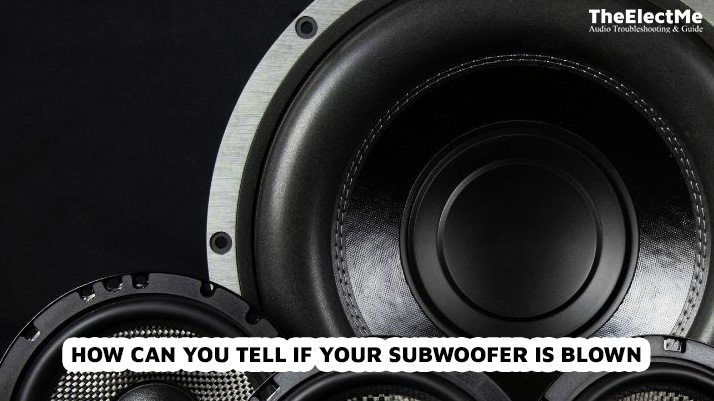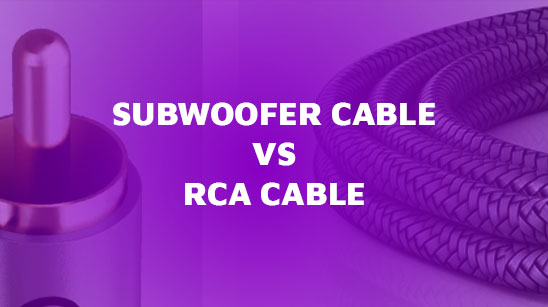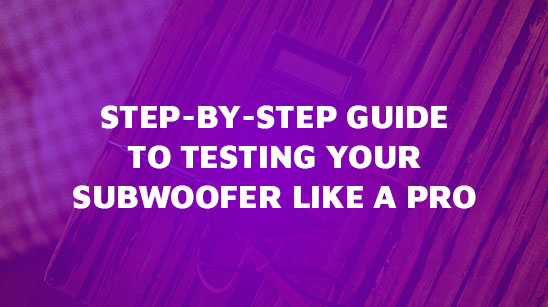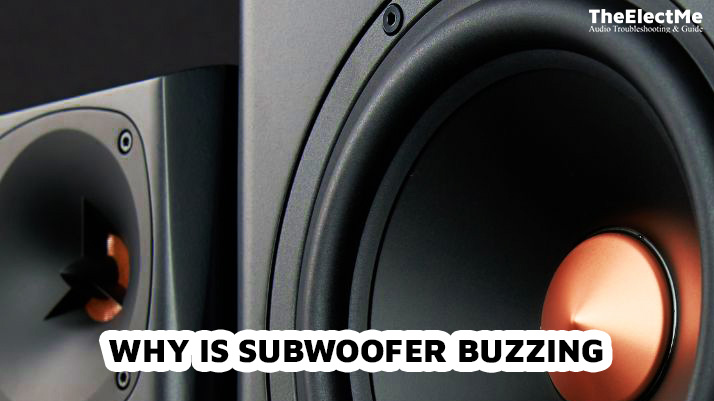Who doesn’t love a deep, rumbling bass when listening to their favourite music or watching an action-packed movie? Subwoofers are the key to achieving that low-end sound that adds depth and richness to our audio experience. But did you know that different types of subwoofers are available in the market?
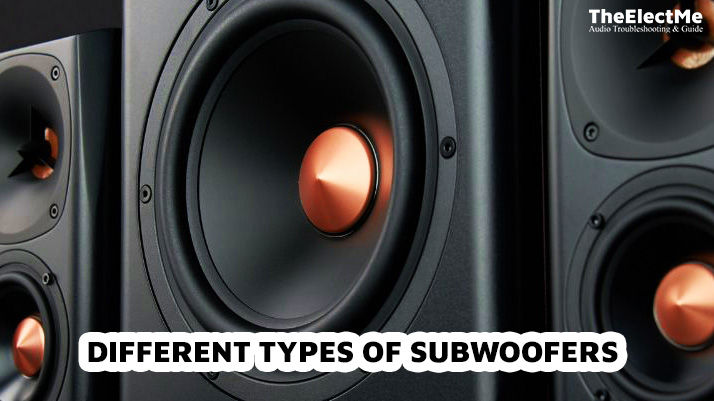
There are 6 main types of subwoofers, each with its own set of pros and cons. Active, passive, enclosed, ported, bandpass, and infinite baffle subwoofers have unique characteristics that cater to different needs and preferences. To get better insight into these types of subwoofers, let’s dive into each one in detail.
Explore The 6 Different Types Of Subwoofers with Pros And Cons
When choosing a subwoofer, the type you select will significantly impact the overall sound quality of your audio system. So, you can place a subwoofer in a car for better sound quality. Here are the 6 different types of subwoofers and their pros and cons for you to consider before making a purchase:
Active Subwoofers
Active subwoofers, also known as powered subwoofers, come with a built-in amplifier. This feature eliminates the need for an external power source, simplifying the setup process. The integrated amplifier is designed to match the driver, resulting in efficient power usage and optimized performance.
Pros:
- Efficient Power Usage: The built-in amplifier is tailored to the driver, ensuring maximum efficiency.
- Easy Setup: No need for an external amplifier simplifies the installation process.
- Space-Saving: As everything is housed in one unit, active subwoofers occupy less space.
- Sound Quality: They often deliver cleaner and deeper bass due to their dedicated power source.
Cons:
- Heat Production: Active subwoofers can generate significant heat due to the built-in amplifier, which may reduce longevity if not correctly managed.
Active subwoofers are best suited for home theatres and high-end audio systems where deep, rich bass is desired. Active subwoofers in a home cinema setup are a practical example.
You can place a subwoofer on a shelf to reproduce sound effects. They enhance movie-watching by providing low-frequency effects like explosions or rumbling sounds, making it more immersive.

Passive Subwoofers
Unlike their active counterparts, passive subwoofers do not have a built-in amplifier. They rely on an external amplifier for power and operation. The external amplifier must be compatible with the subwoofer regarding energy and impedance for optimal performance.
Pros:
- Flexibility: Using an external amplifier allows for customization based on personal preferences.
- Less Heat Production: As the amplifier is separate, passive subwoofers produce less heat.
- Potential for More Power: Passive subwoofers can often deliver more powerful sound depending on the external amplifier.
- Longevity: Without the built-in amplifier, passive subwoofers may have a longer lifespan.
Cons:
- Complex Setup: Requires careful matching of the subwoofer with an appropriate external amplifier, making the setup process more complicated.
Ported Subwoofers
Ported subwoofers, also called vented or bass reflex subwoofers, have one or more ports for free air movement. This design allows the speaker cone to produce deeper and louder bass at lower frequencies.
- Deep, Powerful Bass: The ported design produces a significant low-frequency response, resulting in a more profound and resonant bass.
- Efficiency: They can play louder than sealed subwoofers at the same wattage, making them more power-efficient.
- Less Distortion: The port reduces the pressure inside the enclosure, which can minimize distortion.
Cons:
- Size: Ported subwoofers are usually larger because they require a bigger cabinet and port, which can be difficult in limited spaces.
- Sound Precision: Ported subwoofers excel in loudness and depth but may require more precision than sealed subwoofers.
Ported subwoofers are perfect for genres like EDM, hip-hop, or action films that need deep, booming bass. They are also popular in home theatres and live concert venues due to their ability to produce high-volume, low-frequency sounds.
Sealed Cabinet Subwoofers
Sealed cabinet subwoofers, closed box or acoustic suspension subwoofers, are designed with a sealed enclosure. This design traps the air inside, allowing the speaker cone to move in a controlled manner. As a result, sealed subwoofers can deliver tight, precise, and accurate bass.
Pros:
- Sound Quality: The sealed design offers superior sound precision and accuracy.
- Compact Size: They are typically smaller than ported subwoofers, making them suitable for space-constrained areas.
- Simple Design: The absence of ports makes the design more straightforward and more accessible to construct.
Cons:
- Power Requirement: Sealed subwoofers require more power to produce the same volume as ported.
- Less Bass Extension: They may not produce as deep bass as ported subwoofers.
Sealed cabinet subwoofers are best suited for music genres that require accurate and tight bass, such as jazz, classical, or acoustic music. They are also excellent for audio purists who value sound quality and precision over loudness.

Passive Radiator Subwoofers
Passive radiator subwoofers work like ported subwoofers, but they use a passive radiator for enhanced bass instead of a port. A passive radiator looks like a typical driver (speaker) from the front, but there are no “guts” like magnets or voice coils on the back.
When the active driver pushes out, it causes the passive radiator to pull in and vice versa, creating a symbiotic relationship.
- Deep Bass Response: Passive radiators allow the subwoofer to produce deep bass frequencies often associated with larger ported boxes.
- Compact Size: They can be designed in smaller boxes than ported enclosures, making them suitable for space-constrained areas.
- No Port Noise: Unlike ported subwoofers, passive radiator subwoofers do not produce port noise or chuffing.
Cons:
- Complex Design: The design and tuning of a passive radiator can be more complicated than a simple sealed or ported box.
- Cost: Due to their complexity, passive radiator subwoofers can be more expensive to manufacture.
Passive radiator subwoofers are perfect for deep bass like a ported enclosure but lack space for a large box. They’re commonly used in home theatre systems and high-end audio setups where accurate, deep bass is desired. This type of subwoofer may be blown after one to two years.
Front and Down Firing Subwoofers
Front and down-firing subwoofers are two types of subwoofer designs that refer to the direction in which the sound is projected.
Front-Firing Subwoofers
Front-firing subwoofers have the speaker driver on the front side of the enclosure, pushing the sound forward. This type is commonly used in home theatres and stereo systems.
Pros:
- Direct Sound: The sound is directed towards the listener, resulting in a more natural and potentially more precise sound.
- Flexibility: They can be used in sealed, ported, or passive radiator designs.
Cons:
- Placement: They may require more careful placement to avoid sound interference with other objects or walls.
Front-firing subwoofers are perfect for home theatres and music systems, offering optimal positioning for clear sound delivery.
Down-Firing Subwoofers
Down-firing subwoofers have the speaker driver on the bottom of the enclosure, pushing sound down toward the floor. This type is ideal for rooms with hard floors.
Pros:
- Room-Filling Sound: The sound bounces off the floor and spreads in all directions, creating a diffused, room-filling bass effect.
- Less Obtrusive: The design can blend more seamlessly into room decor since the driver is invisible.
Cons:
- Floor Type: They work best on hard floors; carpeted floors can absorb some sound, reducing effectiveness.
- Placement: They need enough clearance from the floor to function correctly.
Down-firing subwoofers may be buzzing due to cable current flow issues. It is ideal for home theatres and audio systems with hard floors, delivering diffused, room-filling bass.
Final Thoughts – Different Types Of Subwoofers
In summary, there are various subwoofers, each with unique features. Sealed cabinet subwoofers offer precise and accurate bass, making them great for jazz or classical music. Passive radiator subwoofers excel in delivering deep bass from compact enclosures, ideal for home theatre systems.
Front-firing subwoofers project sound directly to the listener, which is desirable for a clear sound experience. Down-firing subwoofers disperse sound evenly throughout the room, creating a robust bass effect.
When choosing a subwoofer, consider your space, musical preferences, and the type of sound you want to achieve. The right subwoofer will enhance your audio experience, making every beat count.
